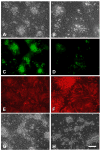Heme oxygenase activity and hemoglobin neurotoxicity are attenuated by inhibitors of the MEK/ERK pathway
- PMID: 19371583
- PMCID: PMC2692087
- DOI: 10.1016/j.neuropharm.2009.01.022
Heme oxygenase activity and hemoglobin neurotoxicity are attenuated by inhibitors of the MEK/ERK pathway
Abstract
Hemoglobin breakdown produces an iron-dependent neuronal injury after experimental CNS hemorrhage that may be attenuated by heme oxygenase (HO) inhibitors. The HO enzymes are phosphoproteins that are activated by phosphorylation in vitro. While testing the effect of kinase inhibitors in cortical cell cultures, we observed that HO activity was consistently decreased by the MEK inhibitor U0126. The present study tested the hypothesis that MEK/ERK pathway inhibitors reduce HO activity and neuronal vulnerability to hemoglobin. The MEK inhibitors U0126 and SL327 and the ERK inhibitor FR180204 reduced baseline culture HO activity by 35-50%, without altering the activity of recombinant HO-1 or HO-2; negative control compounds U0124 and FR180289 had no effect. Hemoglobin exposure for 16h produced widespread neuronal injury, manifested by release of 59.2+/-7.8% of neuronal lactate dehydrogenase and a twelve-fold increase in malondialdehyde; kinase inhibitors were highly protective. HO-1 induction after hemoglobin treatment was also decreased by U0126, SL327, and FR180204. These results suggest that reduction in HO activity may contribute to the protective effect of MEK and ERK inhibitors against heme-mediated neuronal injury.
Figures





References
-
- Abraham NG, Kappas A. Pharmacological and clinical aspects of heme oxygenase. Pharmacol Rev. 2008;60:79–127. - PubMed
-
- Alessi DR, Cuenda A, Cohen P, Dudley DT, Saltiel AR. PD 098059 is a specific inhibitor of the activation of mitogen-activated protein kinase kinase in vitro and in vivo. J Biol Chem. 1995;270:27489–27494. - PubMed
-
- Benvenisti-Zarom L, Chen-Roetling J, Regan RF. Inhibition of the ERK/MAP kinase pathway attenuates heme oxygenase-1 expression and heme-mediated neuronal injury. Neurosci Lett. 2006;398:230–234. - PubMed
-
- Boehning D, Moon C, Sharma S, Hurt KJ, Hester LD, Ronnett GV, Shugar D, Snyder SH. Carbon monoxide neurotransmission activated by CK2 phosphorylation of heme oxygenase-2. Neuron. 2003;40:129–137. - PubMed
Publication types
MeSH terms
Substances
Grants and funding
LinkOut - more resources
Full Text Sources
Miscellaneous

